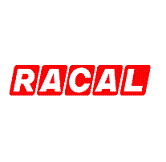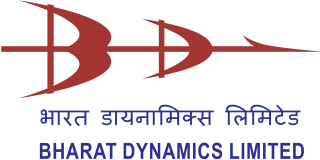The General Electric Company (GEC) was a major British industrial conglomerate involved in consumer and defence electronics, communications, and engineering.

Raytheon, now a business segment of RTX Corporation, was formerly known as the Raytheon Company. The Raytheon Company was a major U.S. defense contractor and industrial corporation with manufacturing concentrations in weapons and military and commercial electronics. It was previously involved in corporate and special-mission aircraft until early 2007. Raytheon was the world's largest producer of guided missiles. In April 2020, the Raytheon Company merged with United Technologies Corporation to form Raytheon Technologies, which changed its name to RTX Corporation in July 2023.
Thales Group is a French multinational company that designs, develops and manufactures electrical systems as well as devices and equipment for the aerospace, defence, transportation and security sectors. The company is headquartered in Paris' business district, La Défense, and its stock is listed on the Euronext Paris.

Cooper Industries was an American worldwide electrical products manufacturer headquartered in Houston, Texas. Founded in 1833, the company had seven operating divisions including Bussmann electrical and electronic fuses; Crouse-Hinds and CEAG explosion-proof electrical equipment; Halo and Metalux lighting fixtures; and Kyle and McGraw-Edison power systems products.
The Plessey Company plc was a British electronics, defence and telecommunications company. It originated in 1917, growing and diversifying into electronics. It expanded after World War II by acquisition of companies and formed overseas companies.
QinetiQ is a multinational defence technology company headquartered in Farnborough, Hampshire. It operates primarily in the defence, security and critical national infrastructure markets and run testing and evaluation capabilities for air, land, sea and target systems.

Racal Electronics plc was a British electronics company that was founded in 1950.

An electronic countermeasure (ECM) is an electrical or electronic device designed to trick or deceive radar, sonar, or other detection systems, like infrared (IR) or lasers. It may be used both offensively and defensively to deny targeting information to an enemy. The system may make many separate targets appear to the enemy, or make the real target appear to disappear or move about randomly. It is used effectively to protect aircraft from guided missiles. Most air forces use ECM to protect their aircraft from attack. It has also been deployed by military ships and recently on some advanced tanks to fool laser/IR guided missiles. It is frequently coupled with stealth advances so that the ECM systems have an easier job. Offensive ECM often takes the form of jamming. Self-protecting (defensive) ECM includes using blip enhancement and jamming of missile terminal homers.
Roke Manor Research Limited is a British company based at Roke Manor near Romsey, Hampshire, which conducts research and development in the fields of communications, networks, electronic sensors, artificial intelligence, machine learning, data science, Military decision support consultancy and operational analysis, information assurance, and human science. In addition to supporting its parent Chemring, Roke undertakes contract research and development, and product development work for both public and private sector customers. Products developed from research at Roke Manor include the Hawk-Eye ball tracker, which is now used widely in sports such as tennis, football, and cricket.
Radar jamming and deception is a form of electronic countermeasures that intentionally sends out radio frequency signals to interfere with the operation of radar by saturating its receiver with noise or false information. Concepts that blanket the radar with signals so its display cannot be read are normally known as jamming, while systems that produce confusing or contradictory signals are known as deception, but it is also common for all such systems to be referred to as jamming.

Thorn Electrical Industries Limited was a British electrical engineering company. It was listed on the London Stock Exchange, but merged with EMI Group to form Thorn EMI in 1979. It was de-merged in 1996 and became a constituent of the FTSE 100 Index, but was acquired by the Japanese Nomura Group only two years later. It is now owned by Terra Firma Capital Partners.
Smiths Group plc is a British, multinational, diversified engineering business headquartered in London, England. It operates in over 50 countries and employs 15,000 staff. Smiths Group is listed on the London Stock Exchange and is a constituent of the FTSE 100 Index.
Cobham Limited is a British aerospace manufacturing company based in Bournemouth, England.
Spirent Communications plc is a British multinational telecommunications testing company headquartered in Crawley, West Sussex, in the United Kingdom. It is listed on the London Stock Exchange and is a constituent of the FTSE 250 Index.
E.ON UK is a British energy company and one of the largest suppliers of energy in the UK, following its acquisition of Npower. It is a subsidiary of E.ON of Germany and one of the Big Six energy suppliers. It was founded in 1989 as Powergen, and was listed on the London Stock Exchange and was once a constituent of the FTSE 100 Index. It has been a subsidiary of E.ON since 1 July 2002.

Bharat Dynamics Limited (BDL) is one of India's manufacturers of ammunitions and missile systems. It was founded in 1970 in Hyderabad, India.BDL, since its inception, has been working in collaboration with DRDO & Foreign Original Equipment Manufacturers (OEMs) for manufacture and supply of various missiles and allied equipment to Indian Armed Forces. While fulfilling its basic role as a weapon system manufacturer, BDL has built–up in-house R & D capabilities primarily focussing on Design & Engineering activities. BDL has three manufacturing units, located at Kanchanbagh, Hyderabad; Bhanur, Medak district, and Visakhapatnam, Andhra Pradesh.
Esterline Technologies Corporation was a publicly traded company that designs, manufactures, and markets specialty products primarily for aerospace and defense customers. The company is best known as a supplier of products and equipment for aerospace companies such as Boeing and Airbus; and for American and allied military forces.

The EuroDASS Praetorian DASS is an integral part of Eurofighter Typhoon defensive Aid Sub-System (DASS) providing threat assessment, aircraft protection and support measures in extremely hostile and severe environments. As the DASS is fully integrated, it does not require additional pods that take up weapon stations or would influence the aircraft's aerodynamic performance. In addition the modular nature of the DASS simplifies future upgrades and allows each partner nation or export customer the option to tailor the DASS to their individual needs.

RTX Corporation, formerly Raytheon Technologies Corporation, is an American multinational aerospace and defense conglomerate headquartered in Arlington, Virginia. It is one of the largest aerospace and defense manufacturers in the world by revenue and market capitalization, as well as one of the largest providers of intelligence services. RTX manufactures aircraft engines, avionics, aerostructures, cybersecurity solutions, guided missiles, air defense systems, satellites, and drones. The company is also a large military contractor, getting a significant portion of its revenue from the U.S. government.
Destini Berhad is a Malaysian company that is involved in heavy industry, defence and oil and gas. This company was formed in 1991 under the name of Satang Jaya Sdn Bhd. At the beginning, this company involved in the business as a supplier of aviation tools and spare parts from Original Equipment Manufacturers (OEM) to Malaysian government especially for Malaysian Armed Forces. The company first time entry into Bursa Malaysia in December 2005 and in September 2011, Satang Jaya Sdn Bhd changed its name to Destini Berhad as a part of company expansions. Destiny Berhad consist of four divisions which is System Enhancement Resources & Technologies (SERT) for land systems, Destini Aviation for aerospace, Destini Armada for marine and Destini Oil Services for oil and gas.







